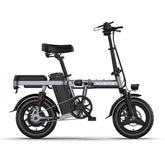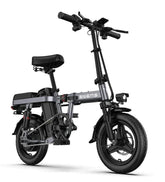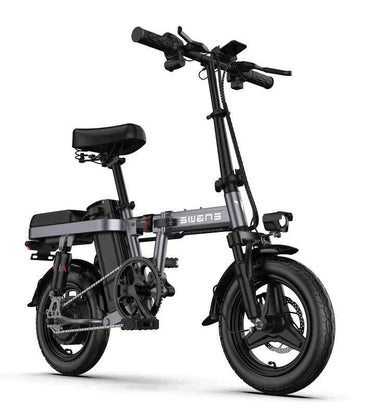Tips for extending battery life
Electric bikes (e-bikes) and electric scooters (e-scooters) have revolutionized urban mobility, offering eco-friendly and efficient alternatives to traditional transportation. At the heart of these vehicles lies the battery—a critical component that determines performance, range, and overall user satisfaction. Proper battery maintenance is essential not only for extending the lifespan of your e-bike or e-scooter but also for ensuring safety and optimal performance. This comprehensive guide delves into practical strategies and expert advice to help you maximize your battery's longevity and efficiency.
Understanding E-Bike and E-Scooter Batteries
Most e-bikes and e-scooters utilize lithium-ion batteries due to their high energy density, lightweight nature, and long service life. These batteries power the motor and other electronic components, directly impacting the vehicle's range and performance. Typically, a well-maintained lithium-ion battery can last between 500 to 1,500 charge cycles, translating to several years of regular use.
Optimal Charging Practices
Avoid Complete Discharges
Regularly allowing your battery to discharge completely before recharging can significantly reduce its lifespan. It's advisable to recharge the battery when it reaches around 20-30% capacity. This practice minimizes stress on the battery cells and helps maintain their health over time.
Prevent Overcharging
Overcharging occurs when a battery remains connected to the charger after reaching full capacity, leading to heat buildup and potential cell damage. To prevent this, unplug the charger once the battery is fully charged. Utilizing chargers with automatic shut-off features can also help mitigate this risk.
Use Manufacturer-Approved Chargers
Always use the charger provided by the manufacturer or one that meets the specified requirements. Incompatible chargers can deliver incorrect voltage or current, potentially damaging the battery or reducing its efficiency. Adhering to the manufacturer's guidelines ensures safe and effective charging.
Charge in Appropriate Temperatures
Charging your battery in extreme temperatures can adversely affect its performance and longevity. Aim to charge the battery in environments where the temperature is between 10°C to 25°C (50°F to 77°F). Charging outside this range can lead to decreased efficiency and potential damage.
Proper Storage Techniques for Battery
Maintain Partial Charge for Long-Term Storage
If you plan to store your e-bike or e-scooter for an extended period, ensure the battery is charged to about 50-60% before storage. This charge level helps prevent the battery from entering a deep discharge state, which can be detrimental to its health.
Store in a Cool, Dry Place
Batteries are sensitive to temperature fluctuations and moisture. Store your vehicle in a location that is cool and dry, away from direct sunlight and sources of heat. Avoiding extreme temperatures helps maintain battery efficiency and prevents degradation.
Avoid Prolonged Inactivity
Batteries can degrade faster when left unused for long periods. Even if you're not using your e-bike or e-scooter regularly, try to take it out for a short ride periodically to keep the battery active and in good condition.
Riding Habits to Preserve Battery Health
Smooth Acceleration and Deceleration
Aggressive acceleration and sudden braking can put undue stress on the battery, leading to faster depletion and wear. Aim for gradual acceleration and anticipate stops to decelerate smoothly, thereby conserving battery power and extending its lifespan.
Utilize Eco or Low-Power Modes
Many e-bikes and e-scooters come equipped with eco or low-power modes that limit motor output to conserve battery life. Utilizing these modes, especially during longer rides, can help extend the distance you can travel on a single charge.
Avoid Overloading
Exceeding the manufacturer's recommended weight limit can strain the motor and battery, leading to increased energy consumption and reduced battery life. Be mindful of the total load, including any cargo, to ensure optimal performance.
Regular Maintenance and Monitoring
Routine Inspections
Periodically inspect your battery and its connections for signs of wear, corrosion, or damage. Early detection of issues can prevent more significant problems down the line and ensure the battery operates safely.
Firmware Updates
Some e-bikes and e-scooters feature firmware that manages battery performance. Keeping this software up to date can enhance efficiency and may introduce new features that help in battery management.
Professional Servicing
If you notice significant declines in battery performance or other related issues, consult a professional technician. They can perform diagnostics and servicing to address problems and provide guidance on potential battery replacement if necessary.
Addressing Common Battery Concerns
Reduced Range
A noticeable decrease in the distance your vehicle can travel on a full charge may indicate battery aging or suboptimal usage habits. Assess your charging practices, riding habits, and storage conditions to identify potential areas for improvement.
Rapid Discharge
If the battery depletes unusually quickly, it could be due to factors such as extreme temperatures, overloading, or a deteriorating battery. Monitoring these factors can help pinpoint the cause and inform corrective actions.
Unexpected Shutdowns
If your e-bike or e-scooter turns off suddenly even when the battery indicator shows charge remaining, this could be a sign of battery imbalance or internal damage. It’s crucial to address this issue early. Consider recalibrating the battery (if your model allows it), and if the issue persists, consult the manufacturer or a certified technician.
Best Practices for Cold and Hot Weather
Cold Weather
Batteries are sensitive to cold and can lose a significant portion of their range in low temperatures. In colder climates:
-
Warm up your battery before use by storing it indoors at room temperature.
-
Avoid charging outdoors when it's freezing—cold charging can damage lithium-ion cells.
-
Consider battery covers or thermal wraps if you ride regularly in cold conditions.
Hot Weather
Excessive heat can be just as damaging as cold:
-
Avoid parking your e-bike or scooter in direct sunlight, especially if the battery is integrated.
-
Don’t charge the battery immediately after a hot ride—let it cool first.
-
Never store the battery in a hot garage or car, as high temperatures can lead to swelling or permanent capacity loss.
Upgrading and Replacing Batteries
Even with the best care, all batteries eventually degrade. Here are some signs it might be time for an upgrade:
-
The battery no longer holds charge like it used to.
-
You experience frequent dropouts or erratic performance.
-
The battery has visible swelling or damage.
Choosing a Replacement Battery
When replacing your battery:
-
Always go for a manufacturer-recommended battery or one with identical specs.
-
Avoid third-party batteries unless verified—cheap batteries can be unsafe.
-
Consider upgrading to a higher-capacity battery if your frame and motor allow, for increased range and improved performance.
Smart Battery Management Systems (BMS)
Modern e-bikes and e-scooters are often equipped with a Battery Management System (BMS). This internal controller:
-
Prevents overcharging and deep discharging.
-
Balances individual battery cells.
-
Monitors temperature and voltage levels.
If your model includes a BMS, ensure it’s always up-to-date (check app-connected devices), and refer to your user manual for optimization tips. Properly functioning BMS adds a big layer of protection and longevity to your battery.

Eco-Friendly Disposal and Recycling
Never throw old e-bike or e-scooter batteries in the trash—they contain hazardous materials.
Instead:
-
Return them to the retailer or manufacturer for proper recycling.
-
Check if your local council or waste management service offers battery recycling services.
-
Use certified electronic waste recyclers who can safely dispose of lithium batteries.
Eco-responsible disposal not only protects the environment but is often legally required in many regions.
Summary: Quick Tips for Longer Battery Life
Here's a handy checklist to keep your e-bike or e-scooter battery in top shape:
✅ Charge between 20%-80% for daily use
✅ Don’t overcharge—unplug once full
✅ Use the original charger only
✅ Avoid extreme temperatures
✅ Store with 50-60% charge if unused for long
✅ Ride smoothly and avoid overloading
✅ Inspect regularly for damage or wear
✅ Keep firmware updated
✅ Recycle responsibly
Ride Farther, Ride Smarter
Your battery is the lifeline of your e-bike or e-scooter—and with the right habits, it can serve you well for years. Whether you're commuting through the streets of Dublin or exploring scenic trails across Ireland, maintaining battery health ensures your ride is always ready when you are.
At Pogo Cycles, we care about more than just selling e-bikes and e-scooters—we’re here to support your electric journey every step of the way. With the right battery practices, you'll enjoy longer rides, fewer worries, and better performance all around.
Got more questions about battery care or need help picking the right e-ride? Drop us a line—we’re always happy to help.














